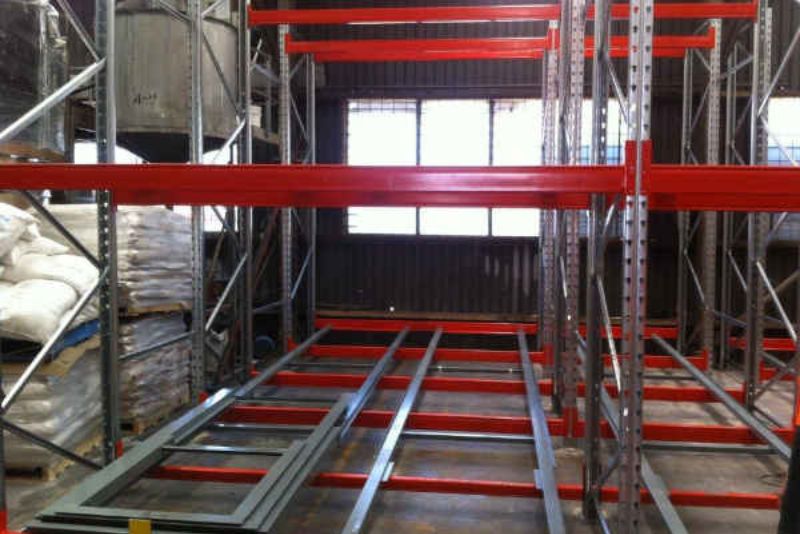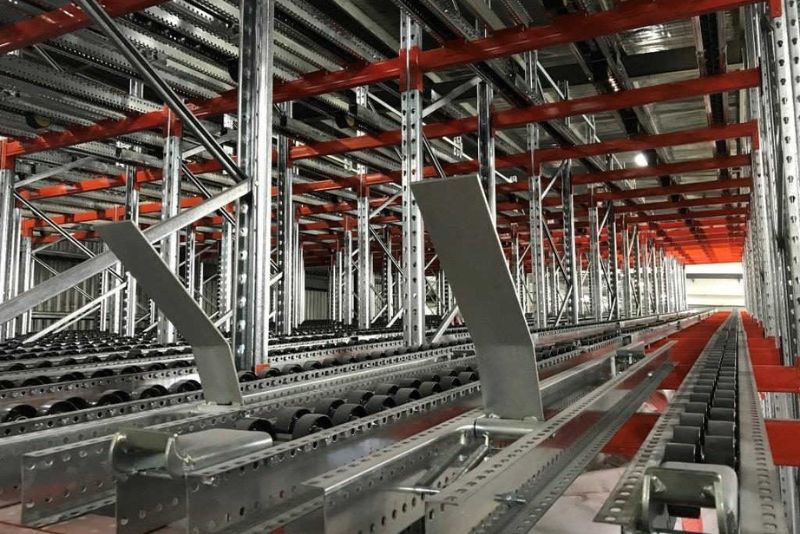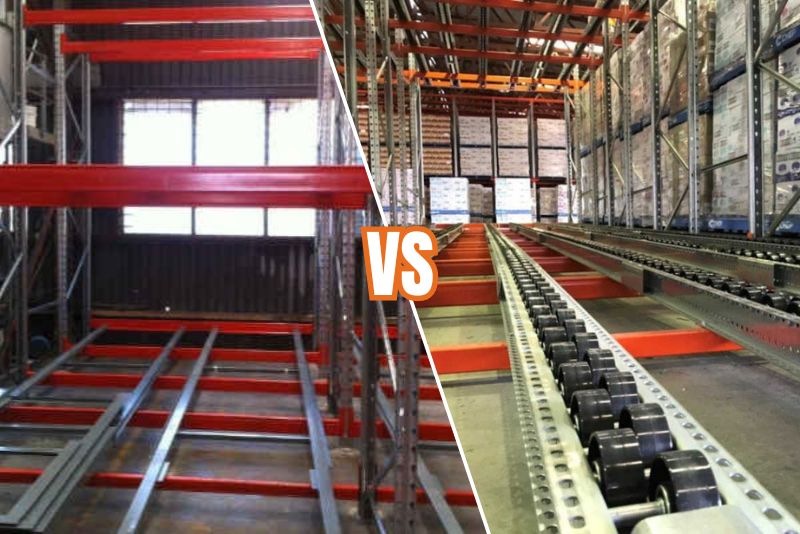In the complex arena of warehouse storage, selecting the ideal racking system is vital for operational efficiency. In this article we’ll be comparing two of our high-density storage systems Push Back and Pallet Flow Racking, each with unique characteristics designed to cater to specific storage requirements. Understanding the distinctions between these systems is key to making an informed choice that aligns with your operational goals.

Push Back Pallet Racking: Enhancing Selectivity and Space Utilisation
Push Back Pallet Racking operates on a Last-In, First-Out (LIFO) basis. It utilises a dynamic cart-and-rail system that allows pallets to be stored up to six deep. This method increases storage density while offering greater selectivity and accessibility compared to traditional Drive-In systems.
Key Features and Benefits:
- Increased Selectivity: Provides 3 to 5 times the number of pick faces as Drive-In Racking, allowing for more SKUs to be accessed from the main aisle.
- Efficient Use of Space: Offers up to 90% more product storage than selective racking, effectively doubling stacking height and saving aisle width.
- Versatile and Safe: The system’s design minimises the risk of blockages and product damage, ensuring smooth operation without the need for special forklifts.
- Ideal Application: Best suited for bulk storage where products have varying turnover rates but do not require strict FIFO management.

Pallet Flow Racking: Streamlining Operations with FIFO Management
Pallet Flow Racking is a highly efficient system designed for First-In, First-Out (FIFO) inventory management. It features inclined tracks with rollers, allowing pallets to glide smoothly to the retrieval point under gravity. This system is perfect for managing perishable goods or items with expiry dates.
Key Features and Benefits:
- FIFO Inventory Management: Ensures the oldest stock is always accessible first, vital for freshness or expiry date compliance.
- Space Saving: Reduces storage footprint by up to 60% compared to conventional racking systems, with dedicated loading and retrieval areas.
- Increased Safety: Promotes safer warehouse operations by keeping pickers in pedestrian-only aisles and reducing forklift traffic.
- Ideal Application: Optimised for food products and other perishables where stock rotation and access to oldest items are crucial.

Choosing the Right System for Your Warehouse
The decision between Push Back and Pallet Flow Racking hinges on your specific storage needs:
- For Varied Product Turnover without FIFO Requirements: Push Back Racking is the superior choice. It maximises space and offers excellent selectivity for warehouses with a diverse range of SKUs.
- For Strict FIFO Stock Rotation: Pallet Flow Racking is unmatched. It is particularly beneficial for items that require rotation based on expiry or freshness, ensuring the oldest stock is picked first.
Both systems offer unique advantages. Push Back Racking enhances selectivity and space efficiency, making it ideal for operations with diverse product ranges and no strict rotation requirements. In contrast, Pallet Flow Racking streamlines FIFO management, ensuring perishable goods are stored and accessed optimally.
For expert guidance on selecting the best pallet racking system for your warehouse, or to request a design and quote, contact Macrack on 1800 048 821. Our team is committed to providing tailored storage solutions that enhance efficiency, optimise space, and meet your specific operational needs.
